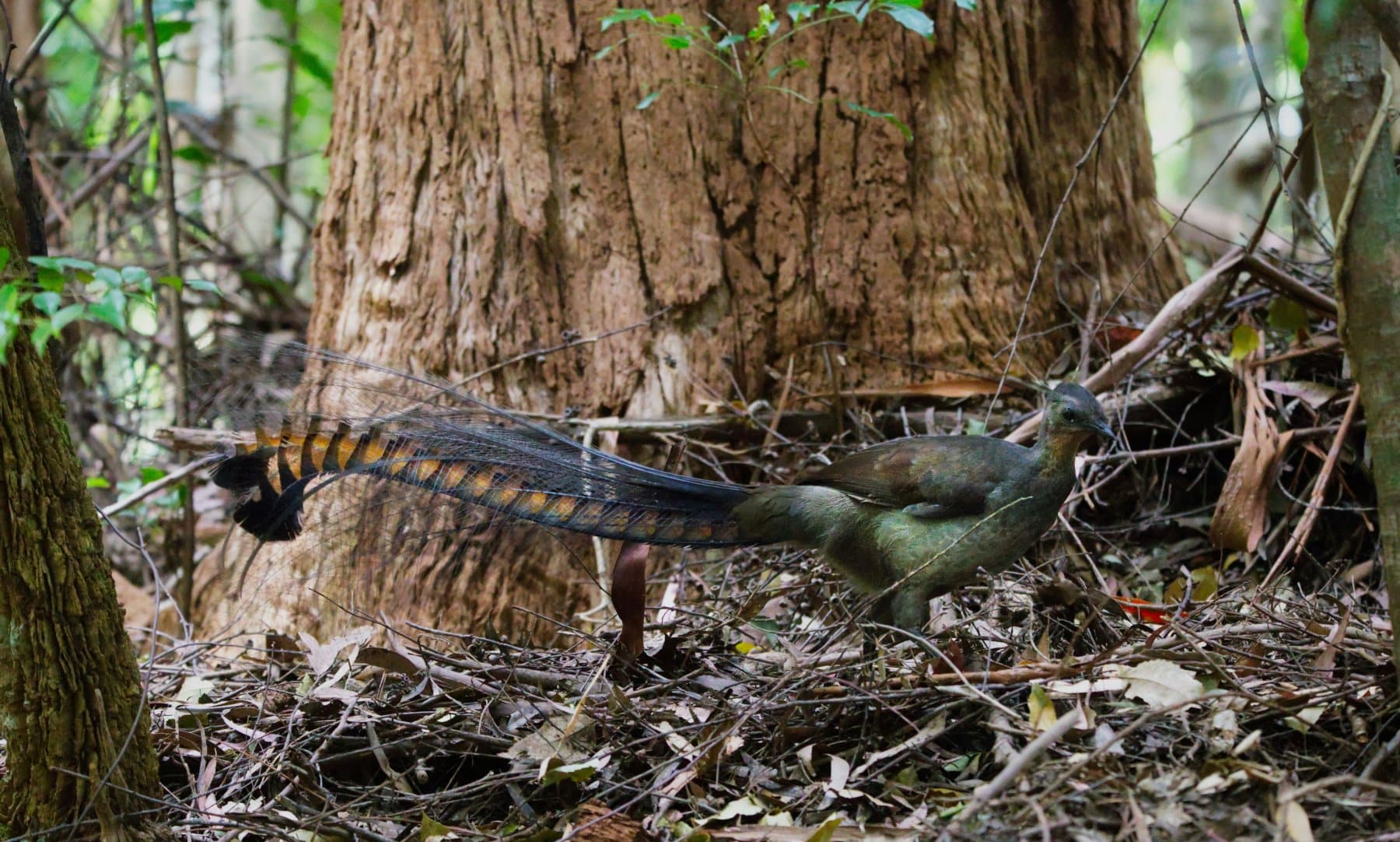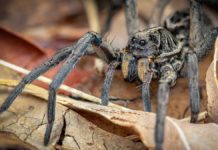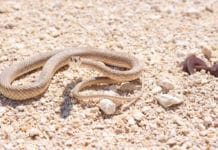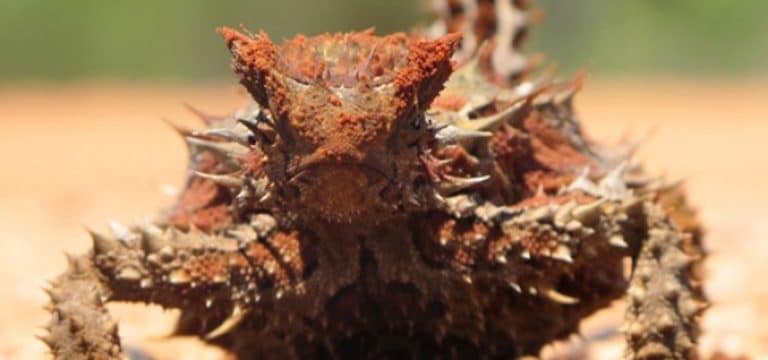
Australian fauna consists of a huge diversity of species. The vast majority (90%) are endemic to the country, which means they won’t be found in the wild anywhere else in the world! The island’s isolation and climate change partly explain the diversity of this rich and special fauna. The aboriginal colonisation more than 40,000 years ago and the European’s discovery of Australia during the 18th century significantly affected the fauna. Today, though some species have completely disappeared, others have survived and even thrived.
If you’re planning a trip Down Under, here’s a guide to the most unusual animals in Australia — some you’ll see often, and others you’ll have to be lucky (or brave!) to spot.
Koala
These fluffy, tree-hugging marsupials are Australia’s most beloved icons. They sleep up to 20 hours a day and feed almost exclusively on eucalyptus leaves. You’re most likely to spot them in the wild in Queensland, Victoria, or New South Wales.
🧠 Fun fact: Despite looking like bears, koalas are not bears at all — they’re marsupials!
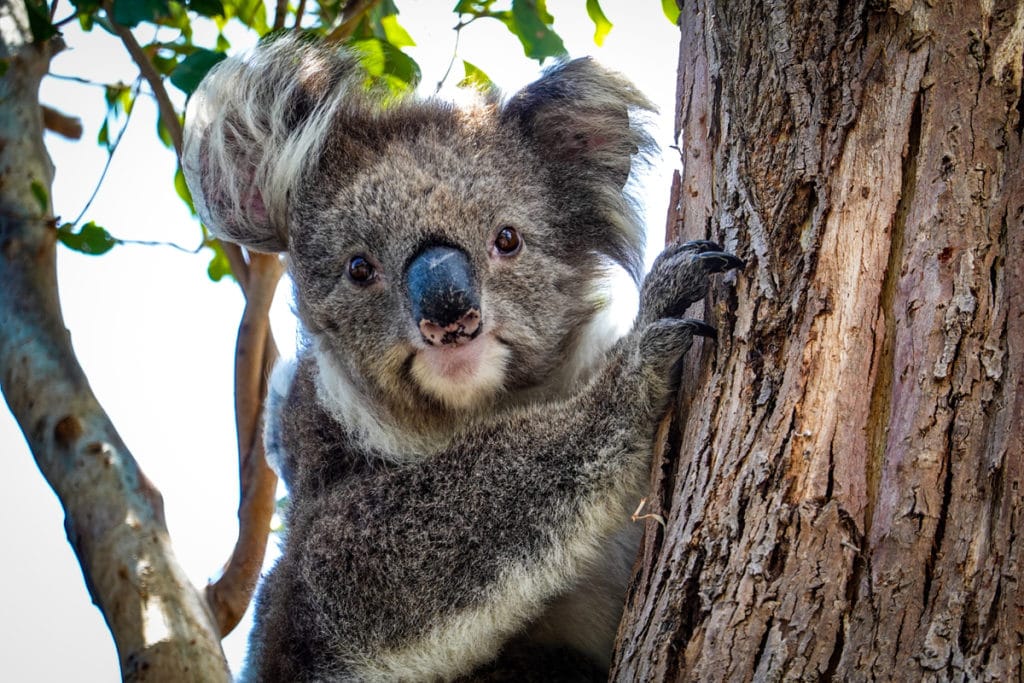
Kangaroo
There are over 60 species of kangaroos, wallabies, and wallaroos in Australia. You’ll see them everywhere — on road signs, national parks, and sometimes hopping across open fields near towns.
⚠️ Be careful while driving at dawn or dusk — kangaroos often cross roads unexpectedly.
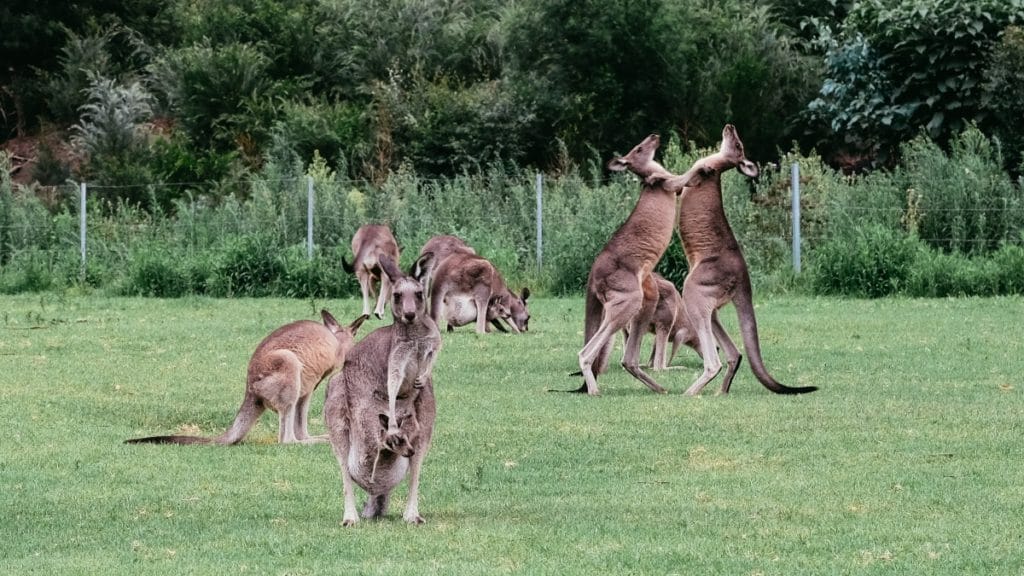
Thorny Devil
Found in the deserts of Central and Western Australia, this spiky lizard is perfectly camouflaged and feeds on ants. Despite its name and looks, it’s completely harmless to humans. They eat mainly ants (nearly 2000 per meal), catching them with its tongue.
🧠 Fun fact: At night, dew condenses on their bodies and in the morning they rub themselves against the dew-covered grass. Then, the hygroscopic grooves between their scales channel this water to their mouth! Genius!
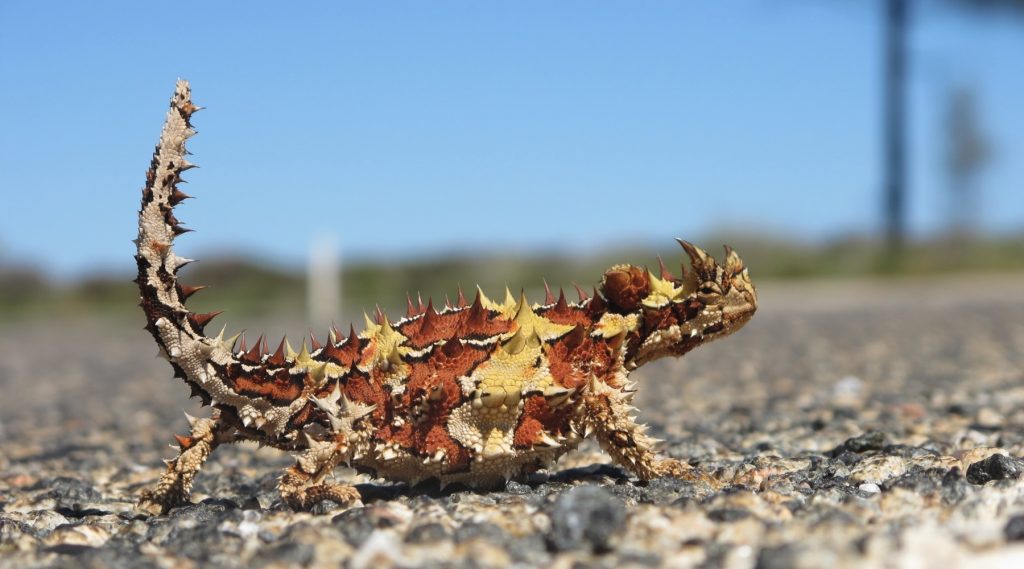
Tasmanian Devil
This small but fierce marsupial is native to Tasmania and famous for its loud screeches, powerful jaws, and aggressive feeding habits. Despite its name, the Tasmanian Devil is shy around humans and active mostly at night.
It plays an important role in the ecosystem as a scavenger, but its population has sadly declined due to a contagious facial tumour disease. Conservation efforts are underway to protect this endangered species.
🧠 Fun fact: The Tasmanian Devil was the inspiration for the Looney Tunes character “Taz” — wild, chaotic, and spinning like a tornado!
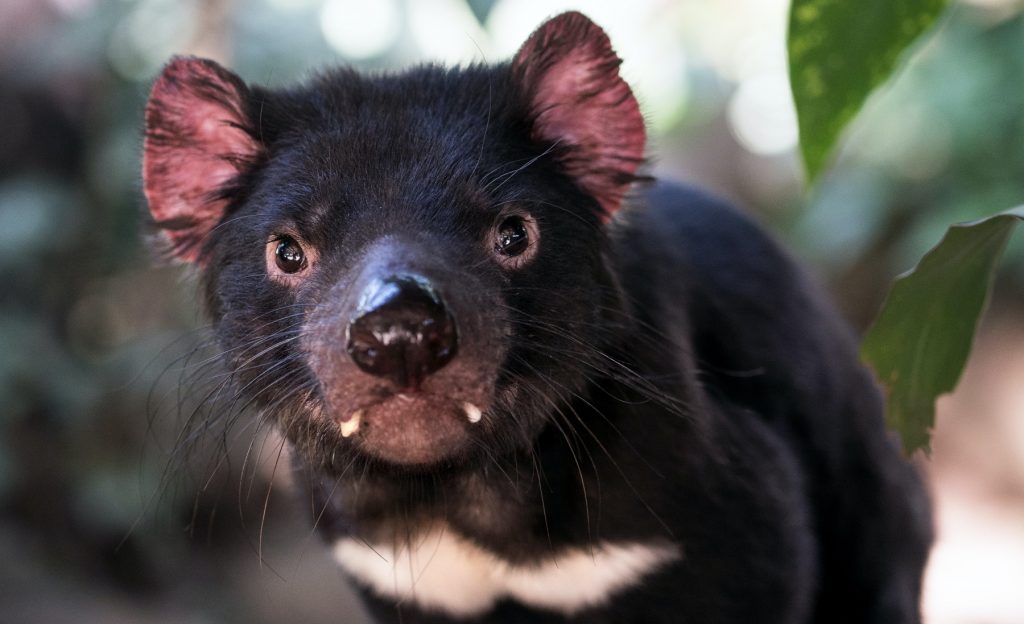
Cassowary
This bird, which looks like a prehistoric ostrich, is only found in the rainforests of Northeastern Australia. There are only 1200 specimens left in the wild.
A cassowary measures about 1.70m tall and weighs about 70kg. Its legs are powerful and have big sharp claws, so it’s better to keep your distance if you come across one! They are very territorial and there have been incidents of them attacking tourists and locals in the past.
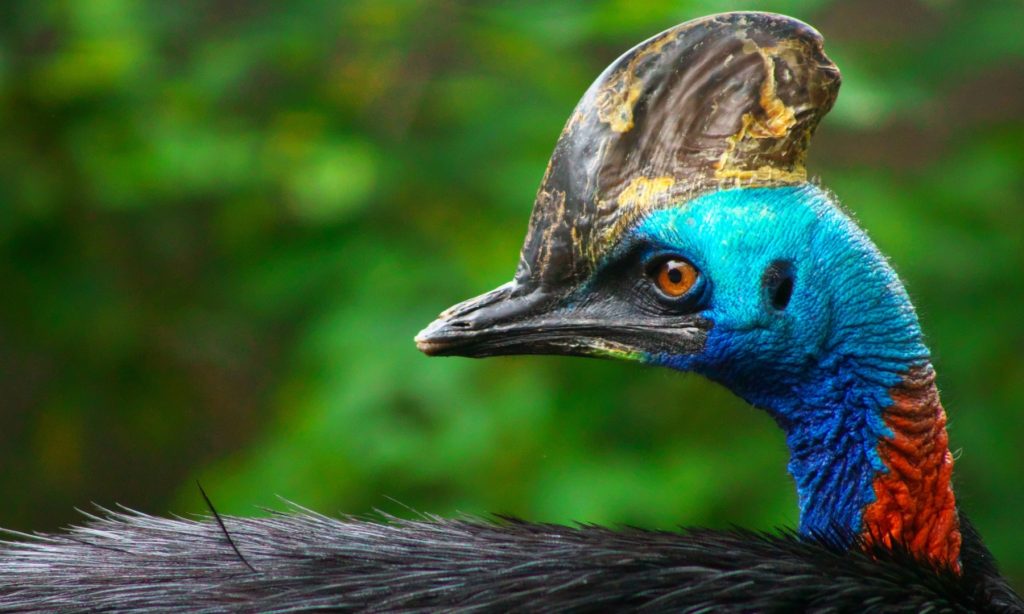
Kookaburra
Part of the Kingfisher family, this unique bird is particularly known for its strange cries that sound like a mocking laugh. The bird features heavily in Aboriginal stories and feeds on anything that crawls, flies and swims!
The ‘Laughing Kookaburra’ is found throughout eastern Australia. They have been introduced to Tasmania, the extreme southwest of WA and New Zealand. In north-central and northwestern Australia, you’ll see more of the slightly different Blue-winged Kookaburra.
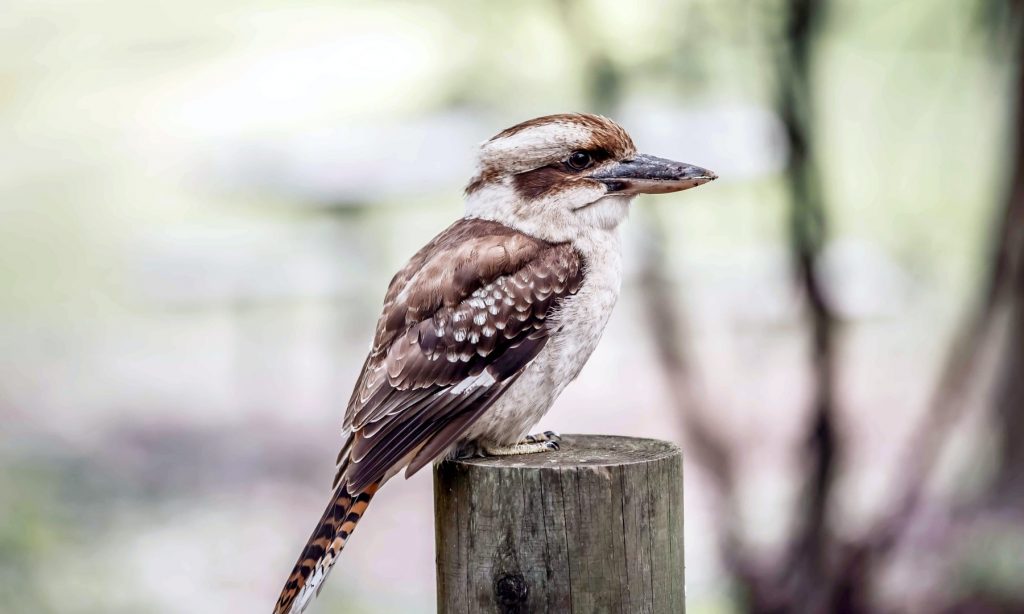
Echidna
One of only two mammals in the world that lay eggs (the other being the platypus), echidnas are spiky and shy. They use their long snouts and sticky tongues to eat ants and termites. They then suck up ants and other insects with their sticky saliva-covered tongue, which can be 17cm long!
🧠 Weird fact: They have four heads on one penis. Yup. That’s Australia for you.
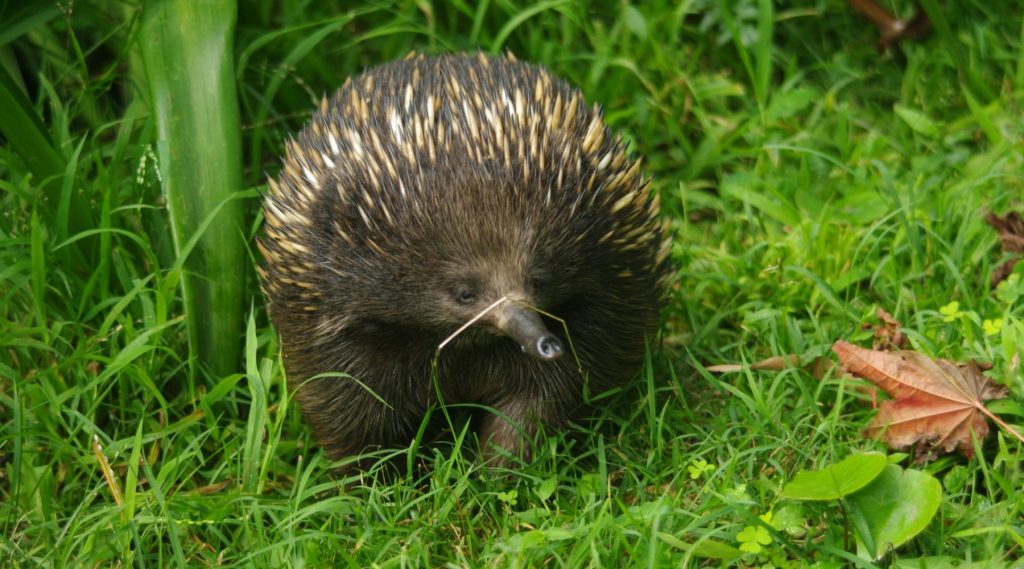
Frilled Neck Lizard
Famous for its large frill that pops up when it feels threatened, this dinosaur-looking lizard is both terrifying and hilarious. You might spot one in Northern Australia.
Frilled neck lizards are quite large, reaching up to 90cm long or ore (their tail is about two-thirds of their length) and weighing up to 500g.
🧠 It can run on two legs and has been the star of Aussie memes for years.
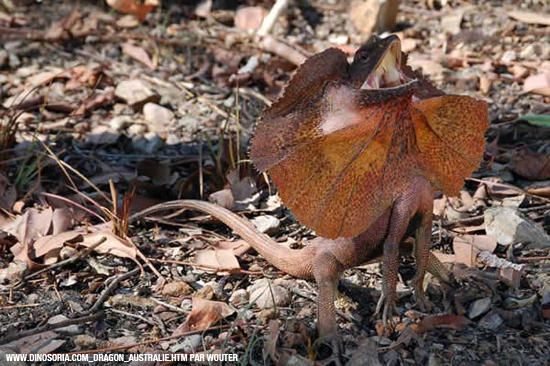
Platypus
With its duck beak and beaver tail, the platypus is a unique species. It is found on the east coast of the country and in Tasmania. The platypus locates food (small invertebrates) using the electro-receptors in its beak.
The platypus is a nocturnal animal, and very well adapted to the living conditions of the Australian continent. Its coat resembles that of a beaver, and its tail stores fat reserves, similar to the Tasmanian devil.
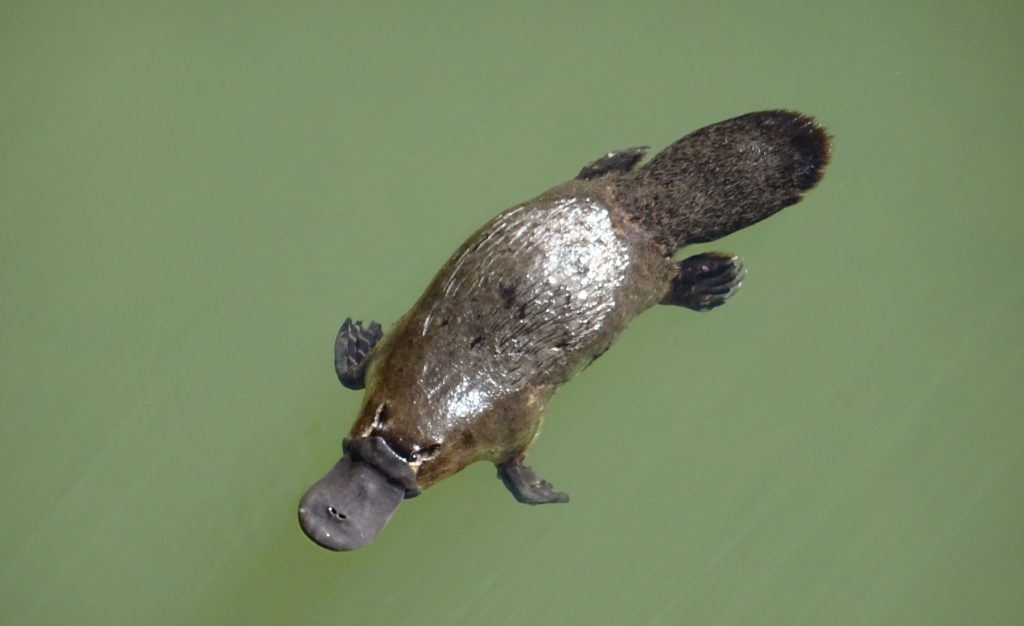
Wombat
The wombat is a small, shy marsupial found in eastern Australia and Tasmania. It looks like a small bear and can weigh up to 40kg and measure 1.30m! Wombats have short, muscular legs and sharp claws, perfect for digging in the ground.
Wombats are nocturnal herbivores with fairly poor eyesight. They rely on smell to navigate and find food. They can travel 3km per night to eat grass, roots and shrubs.
🧠 Like rabbits, their incisors grow continuously, so they must gnaw on tough materials like bark to wear down their teeth.
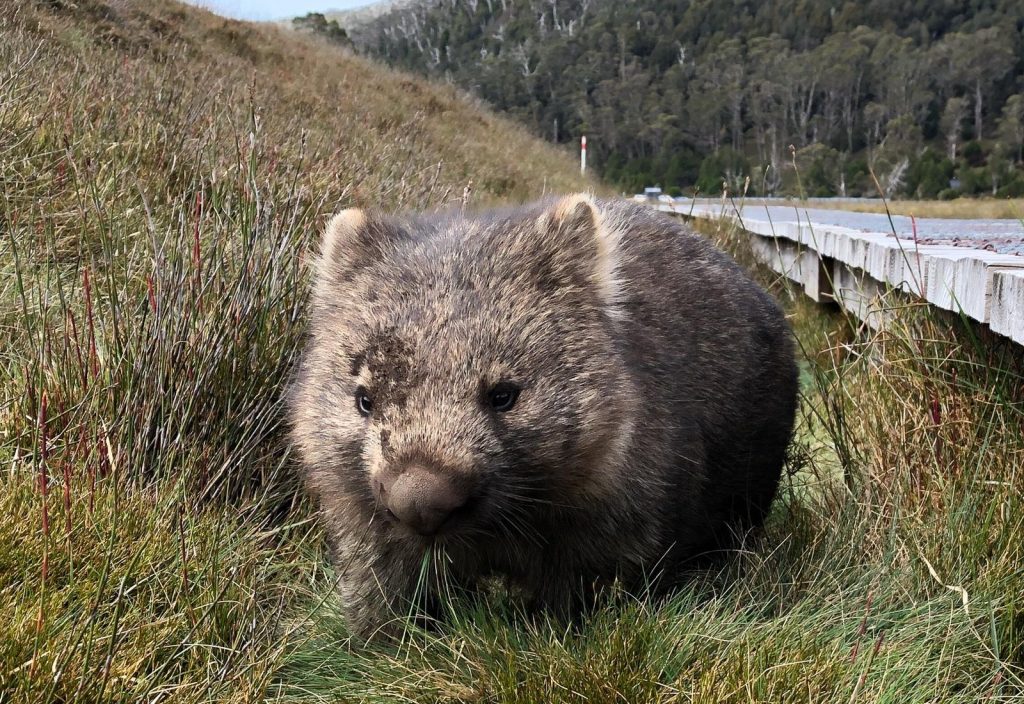
Dingo
A dingo is a type of wild dog introduced to Australia about 4,000 years ago. Dingoes belong to the Canidae (canine) family. They are classified as halfway between a dog and a wolf.
Dingoes can be found in most regions of Australia, apart from some areas like Tasmania, where they are totally absent. They are also very rare in the south-west of Western Australia. In the southern half of the country, the vast majority of dingoes are “hybrids” of dingoes and common dogs. You can observe the purest breed of dingoes on Fraser Island (K’gari), on the east coast of the country (QLD).

Quokka
Quokkas are an adorable marsupial that always look like they are smiling, but their cheeky grin is actually a way for them to cool down, as it helps them to pant!
These little guys are synonymous with Rottnest Island near Perth, and cannot be found anywhere else in the world apart from a small population on the mainland. They are super friendly to humans and are likely to approach you, but make sure you don’t feed them or pick them up or you could end up with a hefty fine!
🧠 Fun fact: The quokka became a social media star thanks to the viral #quokkaselfie trend — even celebrities like Chris Hemsworth have joined in!
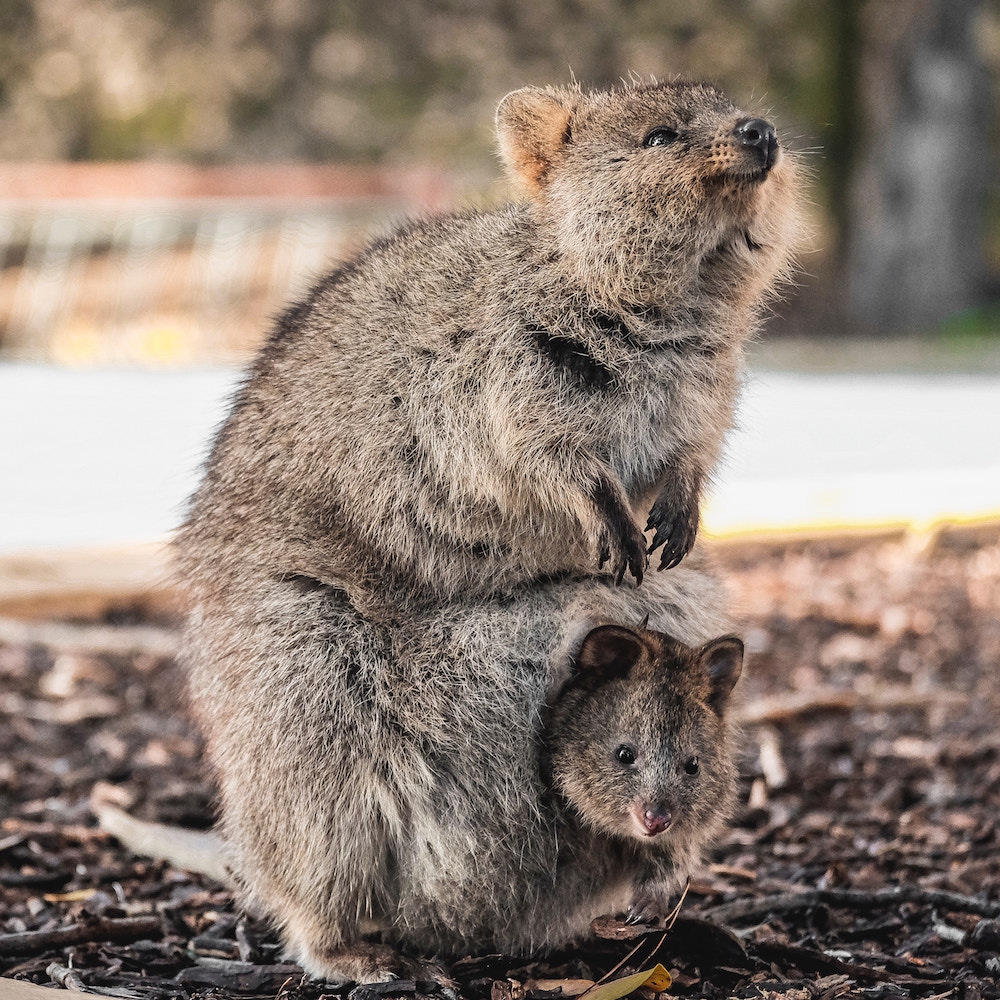
Emu
Emus are the second largest bird in the world, after ostriches, and can grow up to 2m tall. They are flightless, but can run at high speeds – up to 50km/hr. Emus use their wings to cool themselves down in the heat and to help them steer when they are running.
They can be found in every state in Australia apart from Tasmania, where they became extinct and were not reintroduced.
🧠 Weirdly, emus have two sets of eyelids, one for blinking and the other for keeping the dust out!
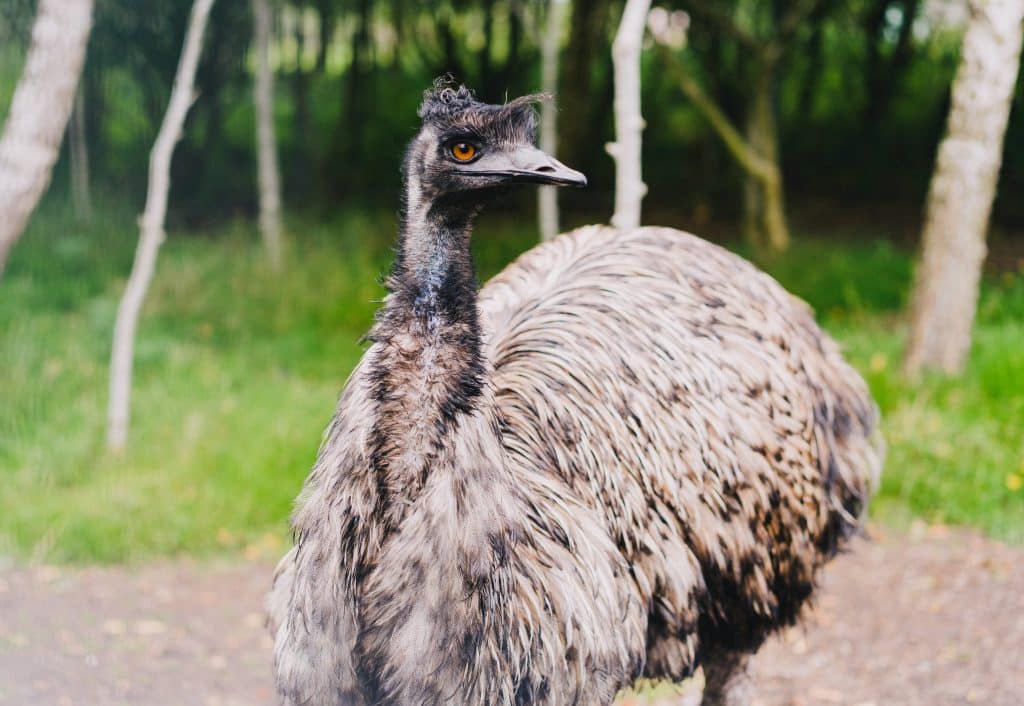
Tawny Frogmouth
The Tawny Frogmouth is a fascinating bird native to Australia, known for its unique appearance and incredible camouflage skills. It is often mistaken for an owl due to its nocturnal habits and similar features, but it actually belongs to the nightjar family. This bird is characterized by its large, frog-like mouth, which it uses to catch insects, and its mottled feathers that blend seamlessly into tree bark, making it nearly invisible when perched in trees during the day.
Tawny Frogmouths are found throughout Australia, including in forests, woodlands, and even urban areas with suitable tree cover. They are more commonly seen at night when they become active to hunt, but during the day, they can be spotted perched motionless on tree branches.
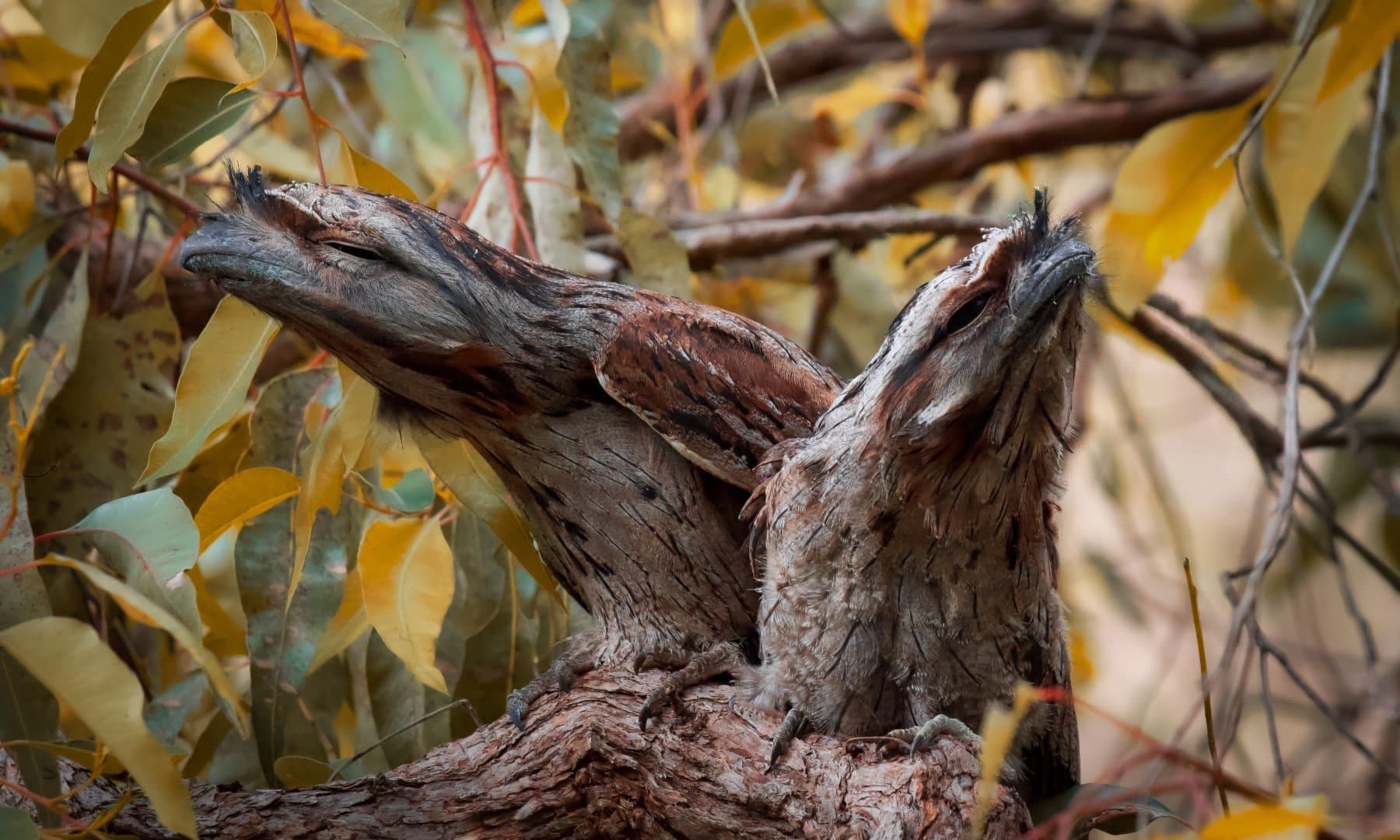
Lyrebird
The lyrebird, a remarkable species native to Australia, stands as a testament to the country’s unique and diverse wildlife. Renowned for its exceptional ability to mimic natural and artificial sounds from its environment, the lyrebird can reproduce the calls of other bird species, chainsaws, car alarms, and even camera shutters with astonishing accuracy.
There are two main species, the Superb Lyrebird and the Albert’s Lyrebird, primarily found in the rainforests of southeastern Australia. These ground-dwelling birds are most notable for the male Superb Lyrebird’s spectacular tail feathers, which resemble a lyre when fanned out during their elaborate courtship displays. Beyond their mimicry talents, lyrebirds play a crucial role in their ecosystem by engaging in “forest gardening.” Their constant foraging for food on the forest floor helps in the decomposition of leaf litter, contributing to the health and regeneration of the forest. The lyrebird, with its complex behaviors and ecological importance, embodies the intrigue and beauty of Australian wildlife, capturing the imagination of nature enthusiasts and researchers alike.
